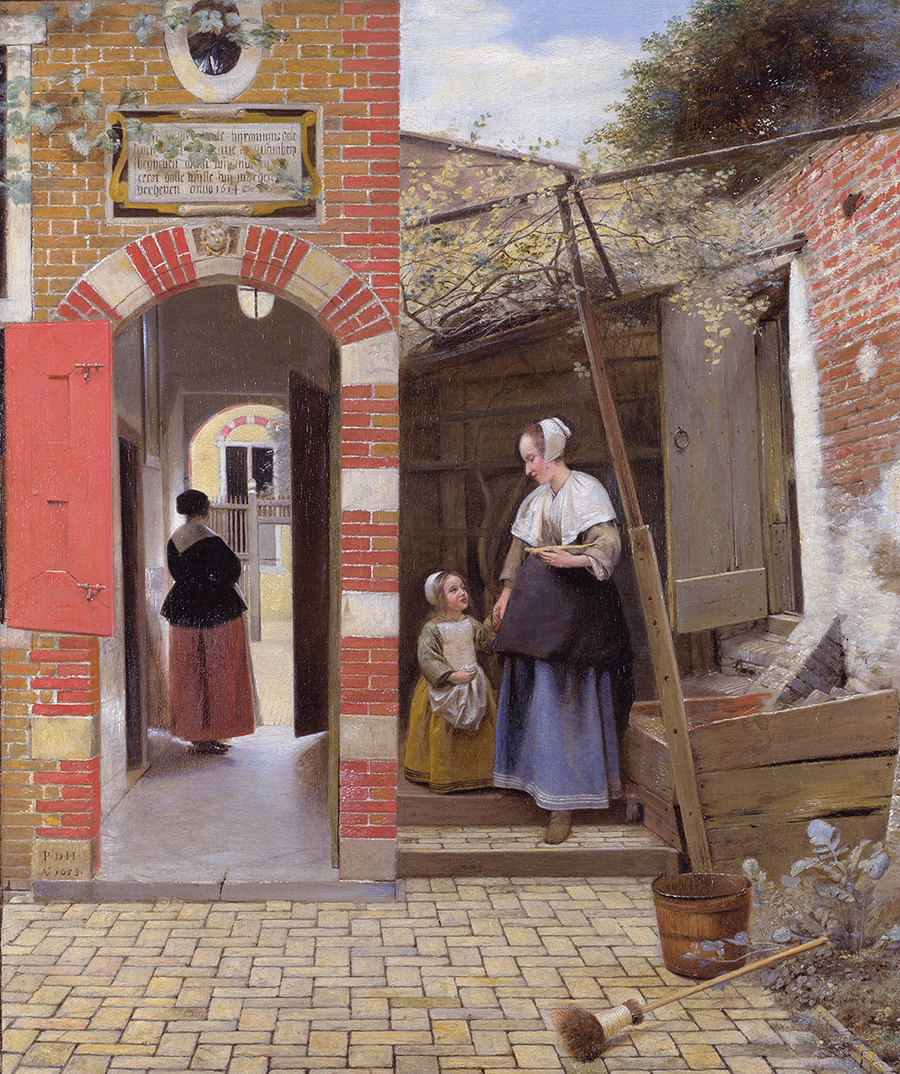The Omnivorous Reader

Discovering a Dutch Master
A life story ringed with mystery
By Stephen E. Smith
Convincing a friend that a work of art you love is worthy of his or her attention can be disheartening.
You: “See the inner darkness and the outer brightness of the painting, how the sense of circumambient air drifts evenly through the scene?”
Friend: “How much is that thing worth anyway?”
Our unabashed enthusiasm is too often dashed by indifference. Or, worse yet, by that Antiques Roadshow inclination to ignore anything other than a painting’s monetary value.
Given our confusion as to exactly what art is and what it means, it’s little wonder we tend to reject uninvited suggestions as to what we should like or dislike. That’s the challenge facing art critic Laura Cumming in Thunderclap: A Memoir of Art and Life & Sudden Death. Since childhood, she has been enamored of A View of Delft, With a Musical Instrument Seller’s Stall, by Dutch artist Carel Fabritius (1622-1654). Now she wants us to love it, too.
Cumming has been the art critic for The Observer and was a senior editor of the New Statesman magazine, both British publications. Her book The Vanishing Velazques was a New York Times bestseller. In her latest offering, she writes with keen insight and obvious affection for the Dutch masters — Rembrandt, Vermeer, Avercamp, Ruisdael, De Hooch, etc. — but the focus of her memoir is on the less celebrated Fabritius, known for having painted The Goldfinch, The Sentry, as well as A View of Delft. Fabritius is considered a minor Dutch master, primarily because so little of his work survives, but Cumming maintains that he’s no less accomplished than Vermeer and Rembrandt, and that he’s deserving of greater recognition. Unfortunately, precious little is known about Fabritius’ life, and it’s assumed that most of his paintings have not survived. We do, however, know about his death.
The “Thunderclap” in Cumming’s title alludes to an explosion near a convent in the city of Delft, where 80,000 pounds of stored gunpowder exploded on Monday, October 12, 1654. The detonation injured a thousand, destroyed hundreds of wooden homes and left a hundred people dead, including Fabritius, his apprentice and the subject of the portrait he was painting at the time. Fortunately, his best-known painting, The Goldfinch, was rescued from the rubble.
Although Fabritius was a student of Rembrandt, he’s seldom mentioned by his contemporaries, and documentation concerning his personal life is sparse. His wife and child died early, and, like most Dutch painters, Fabritius was deeply in debt. His isolation is reflected in The Goldfinch, his lesser-known The Sentry and two brooding self-portraits, which are little enough upon which to base a lengthy aesthetic exposition. “I go round and round this tiny tale,” Cumming writes, “this life circling out from the village of Middenbeemster, ringed with mystery. It is a man’s whole life. Yet I can get no more of him, except perhaps through his art. He is like a suicide who takes his secrets away with him.”
The “memoir” element of Thunderclap focuses on Cumming’s father, James Cumming (1922-1991), a painter of “semi-figurative art.” Cumming admired her father’s artistic dedication, but his inclusion in the narrative seems mildly intrusive when explicating the likes of the Dutch masters. Certainly, his influence is felt in the love Cumming has for art, but the connection to her narrative is tenuous at best.
But Cumming recalls with pleasure the art she discovered growing up in Scotland, and the magnificence of the paintings she observed on a childhood visit to the Netherlands. The bulk of her beautifully written text is devoted to explicating the art produced by those Dutch masters, and the book offers colorful images of the paintings she explicates.
Americans, for all our lack of aesthetic depth, are nonetheless capable of appreciating how art relates to our everyday lives. Grant Wood’s American Gothic, for example, is an immensely popular masterpiece that illustrates through the subtle use of symbolism most of our aspirations and contradictions — the individual vs. collective wisdom, religion, the American Dream, the virtues of hard work, the relationship between the sexes, upward social mobility, etc. — and the subtle social criticism in Childe Hassam’s Washington Arch in Spring is apparent to any careful observer. Ethnocentric tendencies aside, it’s possible to discern much about the cultural history of a foreign country by studying its art. This is where Cumming’s insights are essential.

Her description of De Hooch’s The Courtyard of a House in Delft is representative of her work: “. . . the brickwork lying in its separate courses, the paint exactly imitating mortar; the dusty blue of the weeds and ivy, the clear light of the street; then the wonderful set of rhyming shapes — the scarlet shutter on one side, its wooden counterpart on the other; the oval window in the stonework and its glass twin in the hallway, the recession of arch inside arch inside arch that takes the eye right through the corridor and out in the street of Delft.”
Reading Cumming’s meticulous descriptions opens the reader’s perception of the accompanying paintings. Her precise prose takes readers on an excursion through the Rijksmuseum and the Golden Age of Dutch Art. It’s a tour worth every ounce of effort.
No book, especially a book on art, is for everyone. But Thunderclap comes close. Keep an open mind. And if you’re not interested in art, you can take solace in the fact that the masterpieces Cumming presents are priceless, deserving of a jubilant Antiques Roadshow “Wow!” with the turn of every page.
Thunderclap: A Memoir of Art and Life & Sudden Death will be in bookstores in mid-July. If you find it enthralling, you might also enjoy Donna Tartt’s 2014 Pulitzer Prize-winning novel The Goldfinch. PS
Stephen E. Smith’s latest book, Beguiled by the Frailties of Those Who Precede Us, is available from Kelsay Books, Amazon and The Country Bookshop.
